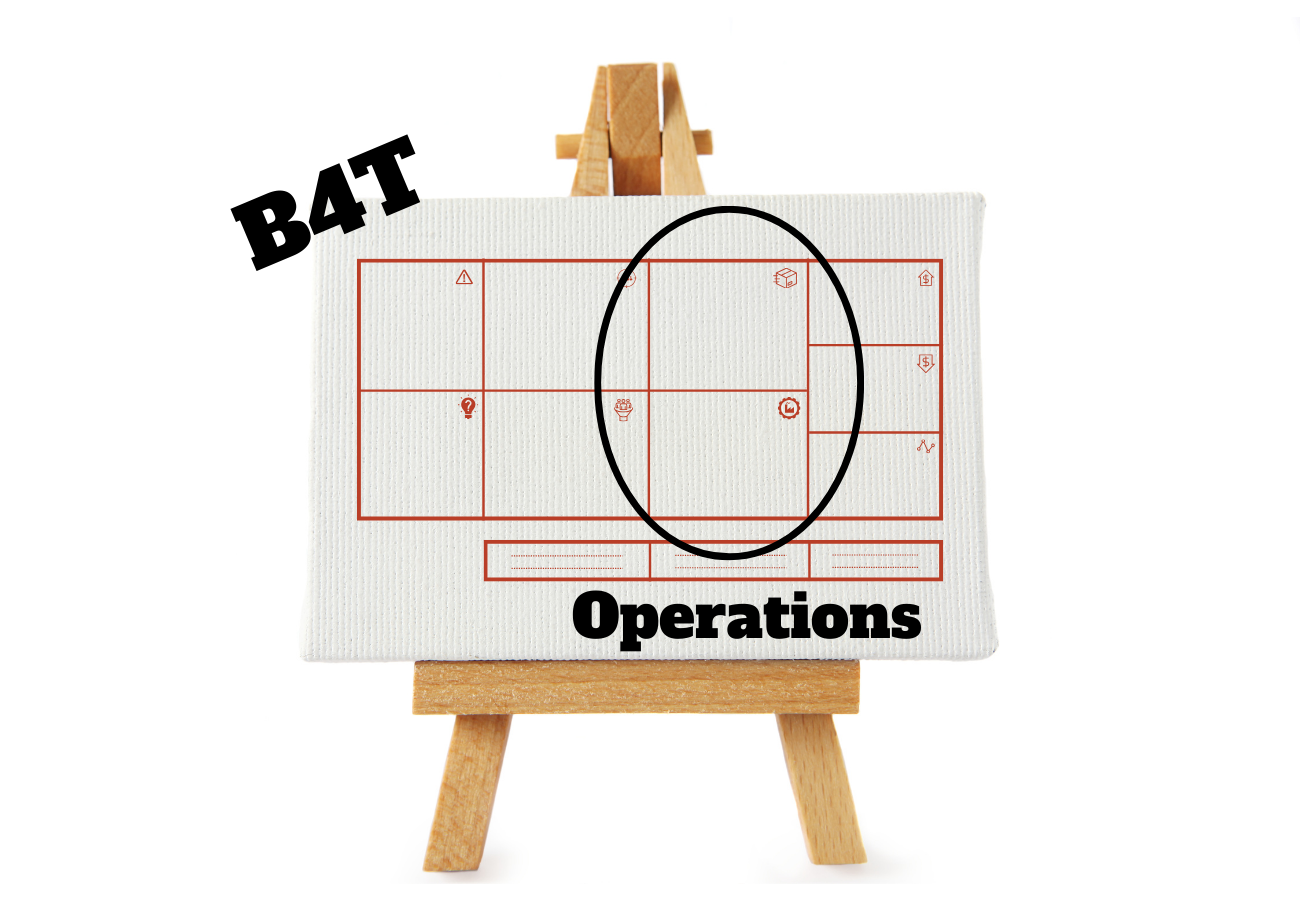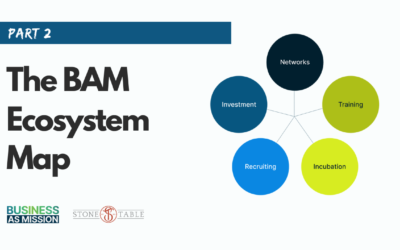The B4T Canvas: Operations

Read Step 2 of The B4T Canvas Here.
Step 3: Can we fulfill it?
Step 3 of the B4T Canvas begins to describe the operations side of the business. Operations is another way of saying, “How will we deliver value?” In this section of the Canvas, we want to determine both how and what we need to fulfill the customer needs we are selling a solution to. In order to deliver a product or service to our customer, we need to determine how the customer will get it, and what resources are needed to create said products and fulfill said services. It’s all good and fun to imagine our skyrocketing sales and beautiful storefront, but if we cannot deliver, no customers will return. If no customers return, we’re either running a Ponzi scheme or working in tourism… okay, okay. That was uncalled for. But let’s be honest. There are a lot of shady tourism services out there that could care less about customer satisfaction. There will always be another customer.
Distribution Channels. A distribution channel is defined as “the network of businesses or intermediaries through which a good or service passes until it reaches the final buyer or the end consumer.” In order to define your distribution channels, it is helpful to trace everything back from the point it reaches the customer. Working backwards is generally the more accurate way to ensure we are not missing elements that make up the final product. We won’t touch all of the elements of the business, but anyone in contact with the product will need to be identified by operations. Simply put, we will ask the question “but how is that accomplished?” over and over again until we have identified all of the partners we need to be in contact with and internal processes we need to make the operation possible. If vertical integration becomes more relevant in your future growth strategy, you will want to trace beyond your current partners to the very base elements that make up your product/service and attempt to bring those business units in-house.
The process will look something like this.
I sold my customer a cup of coffee. But how was that made possible? Well, I suppose they came into a storefront rather than purchasing online. So I have a storefront. But that reminds me, I want to sell bagged coffee online, so I also have a website with ecommerce solutions. The sales channels are the storefront and the website, but the distribution channels in this case are the storefront and the parcel service. So I need to partner with a parcel service to get some sales to my customers. But how did the coffee get made? Well I guess I need a barista and a coffee roaster in the operations. I suppose I need a bunch of equipment to do the brewing and the roasting as well. Well, so I obviously have coffee I’m selling. I will need to get that from an importer. There’s a partner to add to the list. I also need cups and straws and other paper supplies on an ongoing basis so there is another partner. Maybe syrups and barista-grade milk from another supplier? Will I sell baked goods that I need to order in?
You get the idea…
As you begin thinking about the operations of the business, I recommend considering how you might integrate transformational strategies with your employees. Think of how HR teams are caricaturized as the necessary evil that the greedy, corporate business overlords are always coming up against. This necessary aspect of business is the thing of dreams for a B4T. Take advantage of the company handbook to write in biblical principles. If you’re reading your bible literally, you’ll need to go above and beyond the cultural norms so that employees are compelled to ask why your company treats its employees the way it does. Invest in their lives. Throw company parties. Show off the fruit of the Spirit in the workplace and see what God does.
Patrick Lai, author of Business for Transformation, tells the story of how the Holy Spirit nudged him to give out an undeserved bonus. When the employee asked what they did and he replied that they did nothing to deserve it, “this is grace,” it was then that the employee finally asked, “can you give me a copy of your Book?”
Key Resources. Resources are an elusive bunch to tackle. The term used in the subtitle here is “assets,” and it’s important that you understand the breadth of what that entails.
In the exercise above for distribution channels, we identified several assets such as a building, coffee roaster, espresso machine, grinder, even the website is an asset that will be necessary for the delivery of the products we want to sell. However, you also might have intangible assets in your business such as partnership deals that give you an edge over the competition, or company relationships that neither party wants to break even if a better offer comes along from the competitor. Other intangible assets include intellectual property, brand recognition, and even reputation. These are harder to put a finger on, but they may in fact be your company’s Unique Value Proposition (UVP). For example, suppose our coffee shop has an exclusivity agreement with a local French bakery. If the customer sees the fact that we are the only ones in town with those baked goods as a reason to visit our coffee shop over another, that could be the UVP of the business. This “asset” may or may not show up on a balance sheet’s assets. Nevertheless, it is of critical importance to the company’s success.
If you are familiar with the Business Model Canvas, you will note that the large section devoted to “key partnerships” is simply disbursed throughout this Canvas. There are partners necessary for sales, operations, and finance. Most of our operational partners will go in the distribution channels section above. But, again, you might list something like an exclusivity agreement or a lending or investment partner here. Don’t get hung up on lending and investment being liabilities and equity. They are all simply the flipside of the coin in reference to assets.
Does your company need additional capital for its transformational plan? A typical entrepreneur may focus on cutting all seemingly unnecessary waste, but if your transformational plan is focused on ministering to your staff, you might want to invest heavily in your break room. If your business is going to host discipleship or church gatherings, you might have additional capital requirements. Consider the vision of your transformation plan thoroughly as you begin to define key resources for the company.
The final piece of the transformation plan is both operational and financial, so it is well suited for this section. Philanthropy as missions (our third element in the missional marketplace models), is a strong strategy for a lot of B4Ts, and it comes in all shapes and sizes. Consider how you may use your company assets to further the kingdom in your community of impact. That could be donated funds to a women’s center. It could be donated product to a homeless shelter. It could be employees and owners investing their paid hours in community service and care. I cannot understate the importance of seeing Matt. 25:40 in partnership with Matt. 28:19.
The gospel redeems all things, including the work of our hands.
Read Step 4 of the B4T Canvas Here
For more on Business for Transformation (B4T), Business as Mission (BAM), or their related terms, click here.
If you’re interested in joining the work on the field, we want to encourage you to GO, and if you’re interested in BAM/B4T Coaching, you can reach out to our coaching coordinator here.


